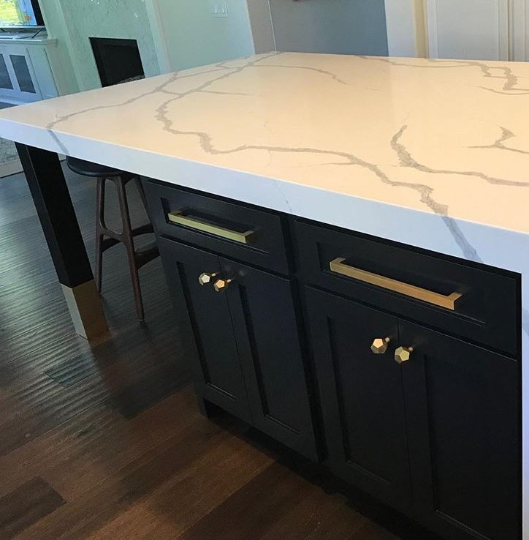Important Variables to Take Into Consideration When Choosing Legs For Cooking Area Island
Picking the suitable legs for a kitchen island entails a mindful assessment of several factors that can considerably influence both functionality and aesthetic charm. As we explore these elements, it ends up being clear that each choice can have far-ranging effects for the overall kitchen area experience.
Product Options
When selecting legs for a kitchen island, recognizing the numerous material alternatives is important for accomplishing both aesthetic allure and structural honesty (Legs For Kitchen Island). The option of product substantially influences not only the resilience of the island however also its overall layout and capability
Steel legs, typically made from stainless steel or functioned iron, contribute a industrial and modern-day feeling while ensuring resilience and security. These materials are immune to put on and can support considerable weight, making them ideal for larger islands.
An additional alternative is crafted materials, like MDF or plywood, which can be more cost-effective while still supplying a series of coatings. They might not give the same degree of security as solid timber or metal. Legs For Kitchen Island. Lastly, materials such as acrylic or glass can produce a modern appearance, though they may require added assistance to ensure stability.
Inevitably, the selection of material for kitchen island legs need to straighten with the wanted functionality and the total style of the kitchen area.
Style and Style

When considering design, the form and finish of the legs are essential. Conical legs can offer a feeling of agility and beauty, while thicker, a lot more robust legs can convey stamina and stability. Additionally, the finish-- be it repainted, tarnished, or natural-- should complement the kitchen cabinetry and countertop products to create a unified look.
In addition, the layout of the legs can also mirror personal taste. Personalized or ornamental legs, such as those featuring detailed makings or special geometric forms, can work as centerpieces, adding character and character to the cooking area. Inevitably, the best selection will certainly not just improve functionality yet also boost the visual allure, making the kitchen area island a standout function of the home.
Elevation Considerations
Choosing the suitable elevation for kitchen area island legs is important, as it directly influences both capability and convenience. The conventional elevation for a cooking area island normally varies from 36 to 42 inches, straightening with usual countertop heights.

It is also vital to account for users' choices and elevations. Tailoring the elevation can guarantee a comfortable experience for all family members, making the cooking area island a much more delightful and practical room.
Weight Assistance
Guaranteeing appropriate weight support for cooking area island legs is essential for both safety and performance. The kitchen area island usually offers numerous purposes, including food prep work, dining, and extra storage, necessitating a durable assistance framework. When picking legs, it is essential to consider the general weight ability needed based on the island's meant usage and the materials that will be put on it.
The choice of material for the legs plays a substantial role in their weight-bearing capacities. Solid wood, steel, and durable composites typically offer superior strength contrasted to lighter products. Additionally, the layout of the legs-- whether they are directly, tapered, or have a pedestal kind-- can affect their ability to disperse weight effectively across the framework.
Constantly speak with the maker's requirements relating to tons limitations to guarantee that the legs can sustain the desired weight without endangering safety and security. In recap, selecting kitchen island legs with adequate weight assistance is essential for producing a risk-free and useful culinary area.
Installation and Maintenance
Appropriate installation and upkeep of cooking area island legs are crucial for making sure long life and stability. To start, it is important to comply with the producer's standards during installment. This usually includes safeguarding the legs to the island base making use of suitable bolts, ensuring that the legs are degree and aligned. Utilizing a degree tool can assist prevent wobbling and improve the overall aesthetic allure of the kitchen island.
Once set up, regular upkeep is necessary to maintain the honesty official website and look of the legs - Legs For Kitchen Island. For wood legs, routine cleaning with a moist fabric and application of appropriate wood polish can prevent moisture damages and keep their surface. Metal legs might need a gentle cleaning remedy to eliminate grease and grime, adhered to by a completely dry cloth to stop corrosion development
Additionally, check the legs on a regular basis for indicators of wear or damage, such as splits or loosened joints. Tightening screws or bolts as required can also extend the life-span of the legs. By adhering to these setup and upkeep techniques, property owners can make certain that their kitchen island stays tough and visually appealing for years to come.
Final Thought

Visual coherence is critical in selecting the design and style of legs for a kitchen island, as these components substantially influence the overall setting of the area. Tapered legs can provide a feeling of lightness and elegance, while thicker, extra robust legs can convey stamina and stability.Picking the suitable elevation Website for kitchen area island legs is crucial, as it straight affects both functionality and convenience. In summary, choosing cooking area island legs with appropriate weight assistance is crucial for producing a secure and practical culinary room.
In conclusion, choosing legs for a cooking area island necessitates cautious factor to consider of numerous factors, including material choices, design, elevation, weight assistance, and installation.